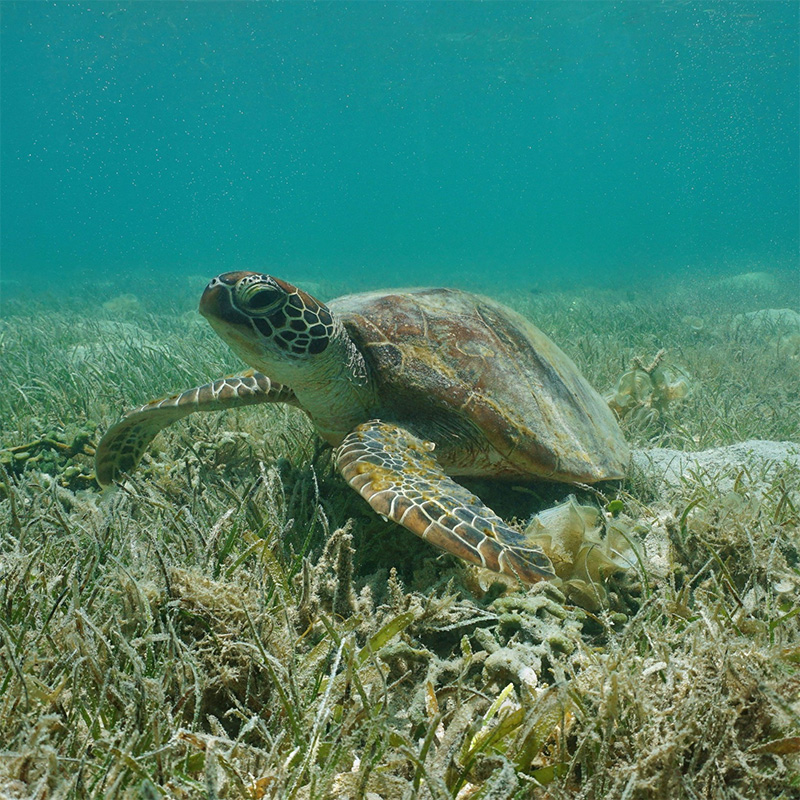Green sea turtles have fed at same seagrass meadows for thousands of years
Green sea turtles have travelled to the North African seagrass meadows to feed for approximately 3,000 years, a new study has shown.

Researchers at the University of York, in collaboration with the universities of Groningen, Exeter, and Copenhagen used isotope analysis to reveal the turtle diet and foraging habits.
Travelling routes
Modern satellite tracking data provided information on the current travelling routes and destinations of sea turtles, which was coupled with archaeological materials used to analyse bones and skin samples of green sea turtles, which revealed significant dietary information.
These results helped researchers join the dots to specific locations - specifically the seagrass meadows of Egypt and West Libya - dating back approximately 3,000 years ago.
Ecology and behaviour
One of the senior authors of the study, Professor Michelle Alexander, from the Department of Archaeology at the University of York, said: "This is a really nice example of archaeology providing a crucial window into the ecology and behaviour of animals in the past - key for informing on conservation strategies in the present.
"The fact that sea turtles have been using the same habitats for thousands of years is incredible."
Feeding habitat
After green turtles hatch, they crawl to the ocean and spend several years floating before they are able to navigate, and they eat a mixed diet during this time. At about five years old, they swim to seagrass meadows and these become their main feeding habitat for the rest of their lives.
Seagrass meadows are, however, now under threat from climate change and the repeated use of the same seagrass beds year after year could put the green sea turtle at risk.
First author, Dr Willemien de Kock, from the University of Groningen, said: “‘We currently spend a lot of effort protecting the babies but not the place where they spend most of their time: the seagrass meadows. And crucially, these seagrass meadows are suffering from the effects of the climate crisis.”
Specific locations
Modern satellite tracking data from the University of Exeter, provided information on the current travelling routes and destinations of sea turtles, connecting diets to specific locations, including the coasts of Egypt and West Libya.
Professor Annette Broderick, from the Centre for Ecology and Conservation at Exeter’s Penryn Campus in Cornwall, said: “This study highlights the importance of this critical habitat for green turtles and the need to protect existing seagrass beds and monitor how they are being impacted by rising sea temperatures to ensure that green turtles continue to live in the Mediterranean for another 3,000 years!”
Endangered
Dr Alberto Taurozzi from the Globe Institute at the University of Copenhagen, said: “It is almost poetic that the bones of turtles hunted by humans thousands of years ago can help us protect endangered turtles today.”
The research team hope that this new study will help inform modern conservation efforts and highlight the urgent need to protect the seagrass meadows to ensure the continuation of the green sea turtle species.
Published paper available: 10.1073/pnas.2220747120